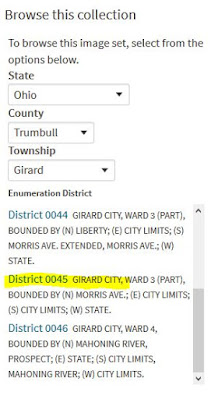Somewhere along my genealogical travels I found out that my great grandmother's mother—who never came to America—was named Maria Luigia. But I didn't know her last name. I did a little research to see if Luigia was her last name, but it was inconclusive.
Flash forward several years as Ancestry.com's resources continue to grow and grow. Now there is a resource called "U.S., Social Security Applications and Claims Index, 1935-2007" which the ancestry.com website describes as picking up where the Social Security Death Index leaves off. If you're lucky enough to find an ancestor in this collection, you may learn things like:
- Their father's name.
- Their mother's maiden name.
- A woman's married name.
- Their date and place of birth.
I happened to find the record for my great grandmother's brother, Giuseppe (Joseph) Caruso, and it featured one heck of a bad transcription for his place of birth (there are no images available). For his mother's name it said Maria L. Gilardo. Another sibling's record listed their mother's last name as something very not-Italian, like Girandiu. I also discovered the actual death certificate for Joseph Caruso, which Americanized his mother's last name to Gerard.
So, weighing all of these alternatives, I felt the most logical last name was Girardi (like Joe Girardi, the New York Yankees' manager). I did some research to find out if anyone named Girardi had come to America from their town of Pescolamazza, and they had.
This was enough to make me about 85% confident that I had the correct name.
Then I discovered the unbelievably valuable (to any descendant of someone from the Province of Benevento, Italy) Benevento State Archives. There I managed to find the actual 1840 birth record for my great great grandmother, Maria Luigia Girardi.
The moral of this story is to keep checking for new resources that can help you fortify your family tree.
 |
| 1840 birth record of my 2nd great grandmother, Maria Luigia Girardi. |


